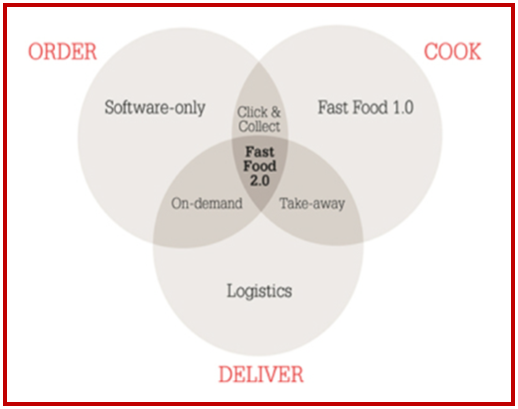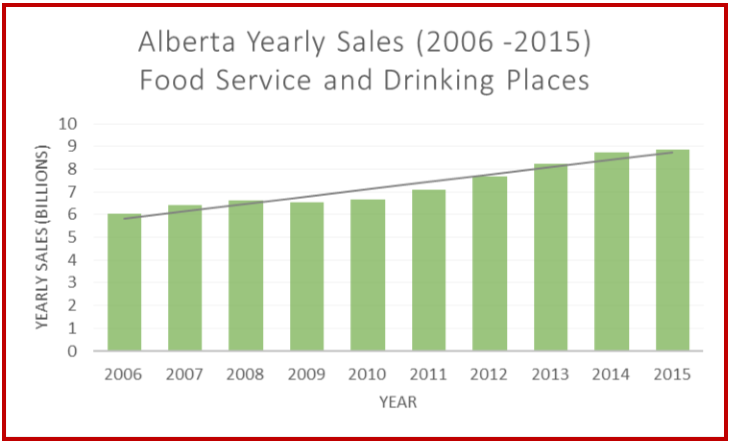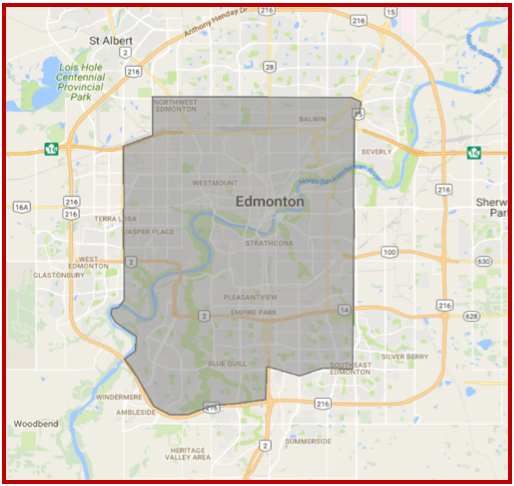| | The evolution of on-demand food and beverage delivery options technology and changing consumers | Data highlights | Sources
,
The Evolution of on-demand Food and Beverage Delivery Options Technology and Changing Consumers
It’s a diner’s market where time, convenience, price and diversity of product are key drivers. On-demand food and beverage delivery applications have become a popular method for some consumers to satisfy their food and beverage needs. These applications provide the consumer with the convenience of being able to use their phone or computer to order from a broad selection of restaurants and menu options. It offers variety and value for money with delivery right to their home or office. There is generally no added premium to the cost of dining in a restaurant.
If you have not been exposed to on-demand food and beverage services, there are a few things you should know.
Ordering a meal online has three main components:
- Using an online platform to order the food.
- Cooking the food once the order is placed.
- Receiving the food from the restaurant and delivering it to the customer.
The earliest on-demand food applications focused on connecting customers with restaurants to place an order through their online application. The order would then be completed by the restaurant and the restaurant would use their own fleet of delivery drivers to complete the order. Skip the Dishes was an early pioneer in the development of on-demand food and beverage ordering in Alberta.
The second wave of applications saw the service shifting from the restaurant coordinating all the effort, to delivery companies coordinating both the online ordering platform and the delivery of the food. This business model reduced the logistical complexity for restaurants and allowed them to focus on food preparation. Logistics experts are focused on managing both the order and the delivery. A recent example of this approach is UberEATS.
The newest on-demand food and beverage applications are attempting to facilitate all three components (ordering, cooking, and delivery), a process that has been coined “Fast Food 2.0”.
An example of Fast Food 2.0 is the start-up company called Sprig, headquartered in San Francisco. The company receives orders through their online app, then prepares the food in one of their kitchens and delivers it to the customer with their own fleet of delivery drivers. This allows the company to have full control of the food service process. It ensures company standards are met through all three stages.
The figure below illustrates the concept of Fast Food 2.0 and the three main components of ordering food online.
Figure 1: Concept of Fast Food 2.0

Source: TechCrunch 2015
Alberta food and beverage sector and on-demand option:
Now that you have a solid understanding of how on-demand food and beverage consumption works, you may be wondering what this means for the food and beverage services industry in Alberta.
In 2015, the Alberta food services and drinking places sector generated over $8.8 billion in revenue. This is a large market for food and beverage delivery applications businesses to operate in.
Figure 2 includes Alberta’s yearly sales for the food services and drinking places sector. Over the last ten years, revenue for the sector has continued to increase, and we can expect this trend to continue over the next few years. Sales growth in 2016, however, could be negatively affected by the economic downturn.
Figure 2: Alberta Yearly Sales ( 2006-2015) , Food Service and Drinking Place

Source: Statistics Canada 2016
Whether you are looking for a quick solution for lunch or your favorite take out on the weekend, there are many delivery application options to choose from. There is currently a lot competition in the delivery application industry. Local companies compete with global companies for market share.
Companies such as Uber are using their existing software and application platform to branch out into the food and beverage delivery business.
UberEats is a food delivery platform created by the already popular online transportation network company, Uber. UberEATS allows consumers to order food from their favorite restaurants and have it delivered to their house. The process is as easy as requesting a ride from the Uber transportation app.
UberEATS is available seven days a week from 10:00AM until 10:00PM.UberEATS food delivery service is only available in the Edmonton market.
The company hopes to expand to include more area within the city limits, and perhaps other Alberta cities in the future.
Figure 3: Current UberEATS Edmonton Coverage Map

Source: UberEATS Website
Opportunities and challenges:
There is an opportunity for on-demand food and beverage applications in Alberta cities and towns. Companies so far have focused on the Greater Edmonton Region and Calgary Census Metropolitan (CMA). These markets have a lot of competition, but they seem to generate enough revenue for new companies to continue to enter the market.
There appears to be a gap in the market. That is smaller cities and towns in regions of Alberta that do not yet have this type of service. A critical density of potential customers (people) is needed to make the economics work. A new entrant in a mid-sized community might not face much less competition. However, there must be enough delivery drivers available to make the service reliable. Drivers also need to be properly licensed and insured.
On-demand food and beverage applications also face competition from the conventional restaurant itself. There is a social aspect to gathering at a restaurant for a meal. Often, consumers dine at a restaurant as a way to spend a night out. Using one of the mentioned applications potentially removes some of the social aspects and introduces another consideration. Not everyone will want to host friends and family in their own home.
Many upscale restaurants offer a specific menu that you can order from with the applications; however, in order to have full access to their menu and ambiance you actually have to dine in their restaurant. This suggests that will continue be a balance between customers who want to physically go to a restaurant and those who prefer using an application to order a meal.
Overall, on-demand food and beverage applications are not meant to replace dining in restaurants, but are another option consumers now have when deciding how they would like to spend their money on food and beverages.
List of other food and beverage delivery applications in Alberta:
BeyondMenu - Offers food delivery services in the Edmonton Capital Region, the Calgary CMA and limited options in Red Deer and Lethbridge. The BeyondMenu app is free to use and delivery prices are set by each restaurant.
Skip the Dishes - Offers food delivery services in the Edmonton Capital Region, the Calgary CMA and limited options in Red Deer, Fort McMurray and Grande Prairie. The Skip the dishes app is free to use and delivery prices are set by each restaurant.
Just Eat - Offers food delivery services in Edmonton and Calgary. The Just Eat app is free to use and delivery prices are set by each restaurant.
Drizly - Offers alcoholic and non-alcoholic beverage delivery services in Edmonton and Calgary. The Drizly app is free to use and there is a delivery charge of approximately $5 per order.
Data Highlights
Food service sales were up in the second quarter of 2016, compared to the first quarter of 2016. Sales in the second quarter of 2016 were also up slightly as compared to the second quarter of 2015.
..
Food Service and Drinking Places Sales in Alberta |
2015 | 2016 | Percentage Change |
Quarter 1 2015 | Quarter 2 2015 | Quarter 3 2015 | Quarter 4 2015 | Quarter 1 2016 | Quarter 2 2016 | Q1 to Q2
(2016) | Annual Q2 change |
$2,099 | $2,258 | $2,302 | $2,225 | $2,090 | $2,271 | 7.97% | 0.57% |
Data in Canadian ($ Million).
Source: Statistics Canada |
Sources
|
|